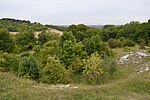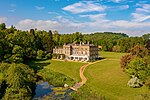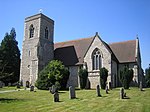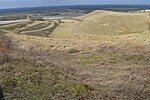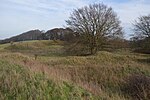Telegraph Hill, Hertfordshire
Nature reserves in Hertfordshire

Telegraph Hill is a nature reserve near Lilley in north Hertfordshire. It is in the Chilterns Area of Outstanding Natural Beauty (AONB). According to the Chilterns AONB, the hill is owned by the Herts and Middlesex Wildlife Trust; a notice on the site says that it is managed by the trust, but it is not listed on the trust's web site as one of its reserves.
Excerpt from the Wikipedia article Telegraph Hill, Hertfordshire (License: CC BY-SA 3.0, Authors, Images).Telegraph Hill, Hertfordshire
Icknield Way,
Geographical coordinates (GPS) Address Nearby Places Show on map
Geographical coordinates (GPS)
| Latitude | Longitude |
|---|---|
| N 51.9458 ° | E -0.3726 ° |
Address
Icknield Way
Icknield Way
SG5 3JS
England, United Kingdom
Open on Google Maps



